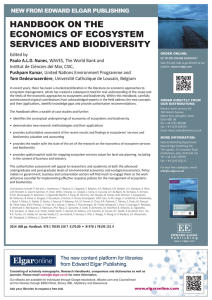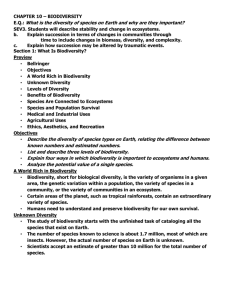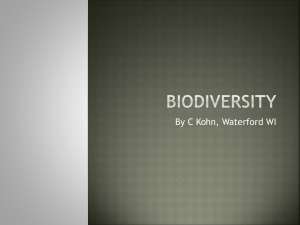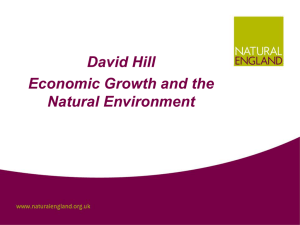FAO and biodiversity for food and agriculture
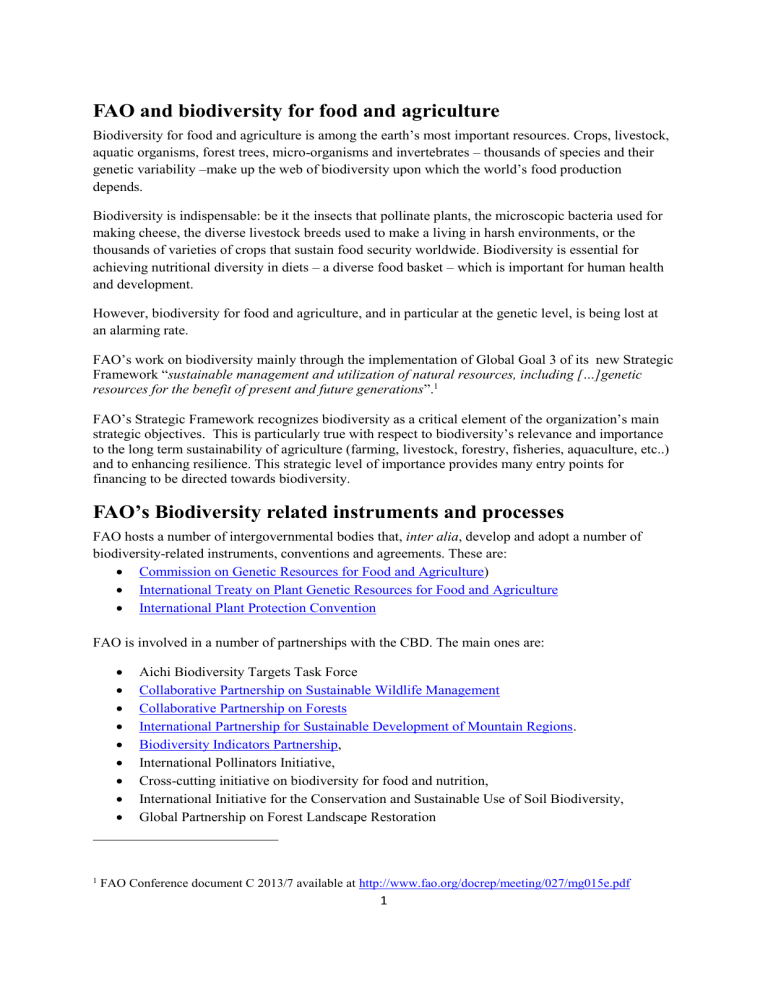
FAO and biodiversity for food and agriculture
Biodiversity for food and agriculture is among the earth’s most important resources. Crops, livestock, aquatic organisms, forest trees, micro-organisms and invertebrates – thousands of species and their genetic variability –make up the web of biodiversity upon which the world’s food production depends.
Biodiversity is indispensable: be it the insects that pollinate plants, the microscopic bacteria used for making cheese, the diverse livestock breeds used to make a living in harsh environments, or the thousands of varieties of crops that sustain food security worldwide. Biodiversity is essential for achieving nutritional diversity in diets – a diverse food basket – which is important for human health and development.
However, biodiversity for food and agriculture, and in particular at the genetic level, is being lost at an alarming rate.
FAO’s work on biodiversity mainly through the implementation of Global Goal 3 of its new Strategic
Framework “ sustainable management and utilization of natural resources, including […]genetic resources for the benefit of present and future generations ”.
1
FAO’s Strategic Framework recognizes biodiversity as a critical element of the organization’s main strategic objectives. This is particularly true with respect to biodiversity’s relevance and importance to the long term sustainability of agriculture (farming, livestock, forestry, fisheries, aquaculture, etc..) and to enhancing resilience. This strategic level of importance provides many entry points for financing to be directed towards biodiversity.
FAO’s Biodiversity related instruments and processes
FAO hosts a number of intergovernmental bodies that, inter alia , develop and adopt a number of biodiversity-related instruments, conventions and agreements. These are:
Commission on Genetic Resources for Food and Agriculture )
International Treaty on Plant Genetic Resources for Food and Agriculture
International Plant Protection Convention
FAO is involved in a number of partnerships with the CBD. The main ones are:
Aichi Biodiversity Targets Task Force
Collaborative Partnership on Sustainable Wildlife Management
Collaborative Partnership on Forests
International Partnership for Sustainable Development of Mountain Regions .
Biodiversity Indicators Partnership ,
International Pollinators Initiative,
Cross-cutting initiative on biodiversity for food and nutrition,
International Initiative for the Conservation and Sustainable Use of Soil Biodiversity,
Global Partnership on Forest Landscape Restoration
1 FAO Conference document C 2013/7 available at http://www.fao.org/docrep/meeting/027/mg015e.pdf
1
FAO holds databases and information and publishes several periodic assessments of natural resources and biodiversity for food and agriculture, such as
Global Forest Resources Assessment (FRA)
State of the World Fisheries and Aquaculture (SOFIA)
The State of the World's Plant Genetic Resources for Food and Agriculture
The State of the World’s Animal Genetic Resources for Food and Agriculture
The State of the World’s Forest Genetic Resources for Food and Agriculture
State of the World’s Forests
The State of the World's Land and Water Resources for Food and Agriculture
The State of the World’s Aquatic Genetic Resources for Food and Agriculture (in preparation)
The State of the World’s Biodiversity for Food and Agriculture (in preparation)
Main biodiversity related instruments developed within FAO are:
FISHERIES
Code of Conduct for Sustainable Fisheries
Development and implementation of context specific fisheries and aquaculture management plans consistent with the Ecosystem Approach to Fisheries (EAF) and the Ecosystem
Approach to Aquaculture (EAA) , using the Toolbox for EAF and EAA
International Plans of Action:
International Plan of Action for the Conservation and Management of Sharks (IPOA-Sharks)
International Plan of Action to Prevent, Deter, and Eliminate Illegal, Unreported and
Unregulated Fishing (IPOA-IUU)
International Plan of Action for the Management of Fishing Capacity (IPOA-Capacity)
International Plan of Action for Reducing Incidental Catch of Seabirds in Longline Fisheries
(IPOA-Seabirds)
International Guidelines:
Guidelines on Bycatch Management and Reduction of Discards .
International Guidelines for the Management of Deep-sea Fisheries in the High Seas
Two International Guidelines for eco-labelling of Fish and Fishery products from i) capture fisheries and ii) inland fisheries
FAO leads the development of International Guidelines on Securing Sustainable Small-Scale
Fisheries as a complement to the Code of Conduct for Responsible Fisheries
FAO Technical Guidelines for Responsible Fisheries
Ecosystem Approach to Fisheries (EAF) toolbox which has been designed to guide users through each of the four main EAF management planning steps and activities using simplified text and clear instructions
2
FORESTRY
Forest economics and finance
Responsible management of planted forests- Voluntary guidelines
Promoting sustainable management of forests and woodlands
Forest and landscape restoration mechanism
SUSTAINABLE AGRICULTURE
Building a common vision for sustainable food and agriculture
Save and Grow
Climate-Smart Agriculture Sourcebook
Sustaining communities, livestock and wildlife – a guide to participatory land-use planning
Set of Land Degradation Assessments in Drylands (LADA) Manuals for Local Level
Assessment of Land Degradation and Sustainable Land Management
Sustainability Assessment of Food and Agriculture systems (SAFA)
International Code of Conduct on Pesticide Management
Voluntary guidelines on the responsible governance of tenure of land, fisheries and forests in the context of national food security
Multiple tools under the Global Action on Pollination Services for Sustainable Agriculture:
Aspects Determining the Risk of Pesticides to Wild Bees
Handbook for Participatory Socioeconomic Evaluation of Pollinator-friendly Practices
Potential Effects of Climate Change on Crop Pollination
Protocol to Detect and Assess Pollination Deficits in Crops: A Handbook for its Use
Tool for Valuation of Pollination Services at a National Level
GENETIC RESOURCES
Second Global Plan of Action for Plant Genetic Resources
Global Plan of Action for Animal Genetic Resources and the Interlaken Declaration
Global Plan of Action on Forest Genetic Resources
Guidelines supporting the work on Animal Genetic Resources
Surveying and monitoring of animal genetic resources
Phenotypic characterization of animal genetic resources
Molecular characterization of animal genetic resources
Breeding strategies for sustainable management of animal genetic resources
Cryoconservation of animal genetic resources
In vivo conservation of animal genetic resources
Preparation of national strategies and action plans for animal genetic resources
Developing the institutional framework for the management of animal genetic resources
Guidelines supporting the work on Plant Genetic Resources
Tools and guidelines for in situ conservation and on-farm management of plant genetic resources for food and agriculture (e.g. Concept note on Global Networking on in situ
3
conservation and on-farm management of plant genetic resources for food and agriculture )
Genebank Standards for Plant Genetic Resources for Food and Agriculture
Guidelines for Developing a National Strategy for Plant Genetic Resources for Food and
Agriculture (draft)
Guide for National Seed Policy Formulation (draft)
INVASIVE ALIEN SPECIES
International Plant Protection Convention IPPC) and its framework and strategic objectives
IPPC Strategic Objective B - Protect the environment, forests and biodiversity from plant pests .
Several (about 53) International Standards on Phytosanitary Measures (ISPMs) adopted by the - Commission on Phytosanitary Measures (CPM), including annexes (diagnostic protocols and phytosanitary treatments). Texts of adopted International Standards on Phytosanitary
Measures (ISPMs) are available in the IPPC website.
Guide to implementation of phytosanitary standards in forestry
Global Bioenergy Partnership (GBEP) Sustainability Indicators for Bioenergy
ENERGY – CLIMATE CHANGE
The UN-Energy Decision Support Tool (DST) for Sustainable Bioenergy (FAO, UNEPP)
Compilation of Tools and Methodologies to Assess the Sustainability of Modern Bioenergy
(publication)
Good Environmental Practices in Bioenergy Feedstock Production (publication)
Bioenergy and Food Security Investment Screening (BEFS operator level tool)
Bioenergy and Food Security Rapid Appraisal
Integrated Food Energy Systems (IFES)
Bioenergy Environmental Impact Assessment Framework (BIAS) gives a brief overview of the main environmental issues related to bioenergy and examines methodological options, knowledge platforms and databases. It also identifies their limitations for evaluating environmental impact of bioenergy projects and policies. Issues covered include water, soil, biodiversity, greenhouse gas emissions, land use change and data and knowledge gaps
Global Bioenergy Partnership (GBEP) Sustainability Indicators for Bioenergy
ACCESS AND BENEFIT-SHARING
Background Study Papers 1, 2, 4, 7, 8, 12, 14, 30, 42, 43, 44, 45,46, 47 and 59 of the
Commission on Genetic Resources for Food and Agriculture
International Treaty on Plant Genetic Resources for Food and Agriculture
INDIGENOUS PEOPLE AND LOCAL COMMUNITIES
FAO Policy on Indigenous and Tribal People
FAO Voluntary Guidelines to support the progressive realization of the right to adequate food in the context of national food security
4
FAO’s work on ecosystem services
One of the Food and Agriculture Organization (FAO)’s strategic objectives is to make agriculture, livestock, forestry and fisheries more productive and sustainable.
Ecosystem services are the engine of the environment. They are essential to life. Land, water, air, climate and genetic resources must be used responsibly if they are to also benefit future generations.
Most food production hinges on the wise management of ecosystem services and biodiversity – they maintain healthy soils, enable pollination and regulate pests and disease, amongst other services.
Healthy ecosystems are the best way to ensure productive agriculture and nutritious food.
These services enable the biological functions that underpin agriculture, and they should not be on the fringe of agricultural planning. Ecosystems need to be supported in order to keep supporting agriculture, livestock, forestry and fisheries. Click on the left on one of the four types of ecosystem services: provisioning, regulating, supporting and cultural, to learn more about these interlinkages.
FAO’s work around the globe helps to maintain and restore ecosystem services and biodiversity: promoting dialogue, building capacities, improving knowledge and understanding and providing guidance to include ecosystems in national and international policies on agriculture.
WHAT FAO DOES
1. Assessment and valuation of ecosystem services and biodiversity
The first step towards protecting the ecosystems, linked to the natural resources a country or community depends upon, is knowing and understanding the role that they play.FAO works with partners to assess ecosystem services linked to food production and agriculture. For example, the fisheries resources of the Amazon Basin, on which millions of people depend, are in turn highly dependent on the health of adjacent forests. Knowing that it’s important for the forests to be healthy is the first step towards protecting the fishing industry as a food source for surrounding communities.
2. Skills development: managing ecosystem services and biodiversity
The next step is to know how to manage ecosystem services. This draws on skill sets that aren’t explicitly part of modern agriculture, forestry or fisheries training. Skills such as identifying biological functions and putting measures in place to enhance production are essential. There is an existing base of knowledge and practices – training materials and tools – that FAO makes available to improve insight into how ecosystem services and biodiversity can be managed.
3. Policy and Dialogue to improve the management of ecosystem services and biodiversity
Skills for the management of ecosystem services must be supported by policy-makers. Their role in sustainable agriculture calls for them to be integrated into both global and national farming policy.
FAO works on policy briefs, helps stimulate dialogue with stakeholders and facilitates dialogue to promote ecosystem services and biodiversity and explain how strongly the sustainability of our natural resources depends on these systems.
5
4. Incentives for ecosystem services: creating value for the support for ecosystem services and biodiversity
Lastly, society (direct and indirect beneficiaries) needs to remunerate farmers for enhancing ecosystem services and biodiversity – creating value for these services. Designing incentive packages requires input from many sectors, and incentives range from regulatory – such as issuing permits and quotas – to voluntary – such as improving market access, labelling or certifying products. FAO supports public and private stakeholders to define the best incentive schemes, and then assists with implementing them in the specific context/country.
A MULTI-DISCIPLINARY APPROACH
Natural resource management has historically sought to control nature for specific objectives: for example, to harvest products for consumption, or for commercial sale. In contrast, FAO calls for governance approaches that recognise that ecosystems are complex, and that they generate multiple benefits. A multi-disciplinary approach is key to the successful management of ecosystem services and biodiversity. Social, economic, environmental, political and nutritional aspects must be considered as a whole.
FAO’s goals:
To equip society and governments with tools to asses and value the benefits of ecosystem services
To equip society and governments with the tools to enhance and maintain ecosystem services
To empower those in charge of agro-ecosystems to better maintain and restore ecosystem services
To strengthen governance through dialogue and policy actions for ecosystem approaches support, including recognition of the rights of local communities and their knowledge systems
6
7



